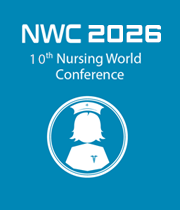Title : Network analysis of depression and anxiety symptoms in Chinese rheumatoid arthritis patients
Abstract:
Background:
Rheumatoid arthritis (RA) patients are susceptible to comorbid anxiety and depression. From the network model perspective, comorbidity is due to direct interactions between depression and anxiety symptoms. The objective of this study was to assess the network structure of depression and anxiety symptoms in Chinese RA patients and identify the central and bridge symptoms as well as how depression and anxiety symptoms are related to quality of life (QoL) in the network.
Methods:
A total of 402 Chinese RA patients were included in this study. Depression and anxiety symptoms were measured by the Hospital Anxiety and Depression Scale (HADS). R software was used to estimate the network. Specifically, we computed the predictability, expected influence (EI) and bridge expected influence (BEI) for each symptom and showed a flow network of “QoL”.
Results:
Our network revealed that the strongest edge was D2 “See the bad side of things”-D3 “Not feeling cheerful” across the whole network. For centrality indices, D3 “Not feeling cheerful” and D6 “Feeling down” had the highest EI values in the network, while A4 “Trouble relaxing” and D6 “Feeling down” had the highest BEI values of their respective community. As to “QoL”, the strongest direct edge related to it was A1 “Nervousness”.
Conclusions:
Network analyses highlighted specific associations between symptoms of depression and anxiety in Chinese RA patients. D3 “Not feeling cheerful” and D6 “Feeling down” were the core symptoms in the network; A4 “Trouble relaxing” and D6 “Feeling down” were the most critical bridge symptoms. A1 “Nervousness” was also identified as key priority due to its significant association with QoL. Our study emphasizes the necessity of implications for clinical prevention and intervention based on these symptoms in Chinese RA patients.
Audience Take away Notes:
- It is the first study to explore the network of anxiety and depression symptoms among Chinese RA patients. We estimated the expected influence (EI) and bridge expected influence (BEI) indices to find the potential intervention targets for anxiety and depression.
- “Feeling down” emerged as both the strongest central symptom and bridge symptom in this network. “Not feeling cheerful” and “Trouble relaxing” are another core symptoms and bridge symptom in the network, respectively. Furthermore, “Nervousness” was identified as key priority due to its significant association with QoL.
- These key symptoms, especially “Feeling down” symptom is of great significance in the prevention and treatment of anxiety and depression in Chinese RA patients.



